
Baltimore & Ohio No. 9 is one of four class C-16 0-4-0T switchers built in 1912 to work tight-radius street trackage along Baltimore harbor. Two were rebuilt as tender engines in the 1920s, but the other two worked as-built until several years after World War II. Their compact size made them a favorite among HO […]
Read More…
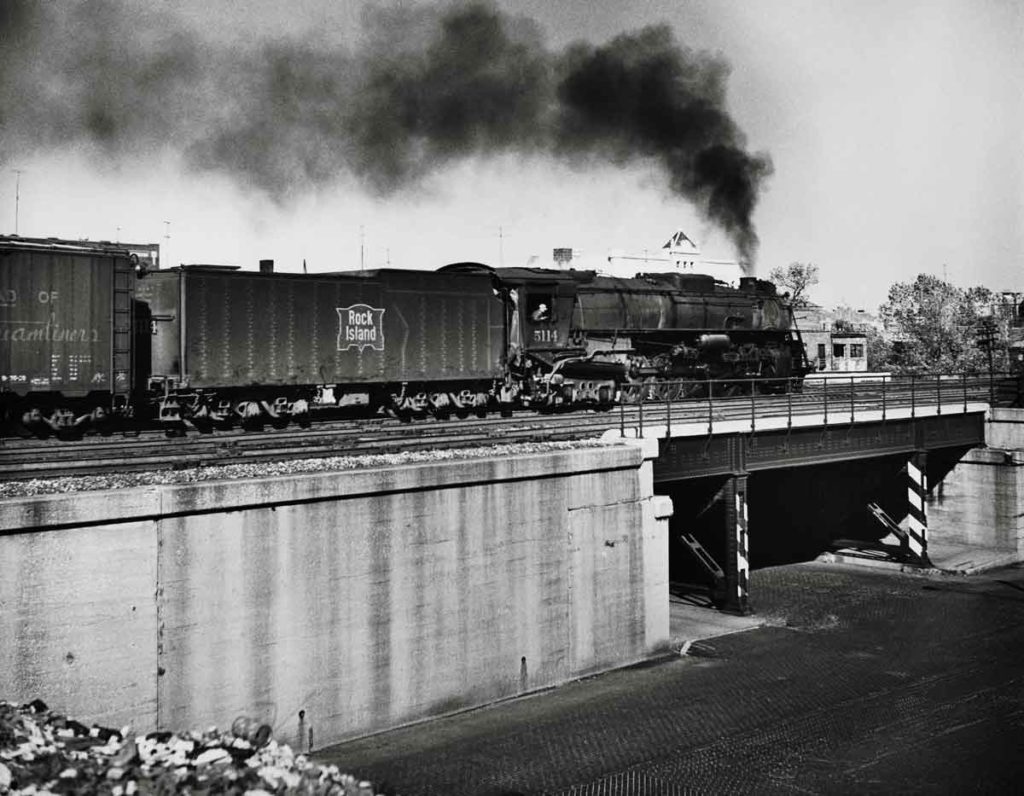
Rock Island class R-67 Northern 5114 has just passed Joliet (Ill.) Union Station and crossed the GM&O/ATSF diamond as it steams toward Chicago with an eastbound freight in fall 1951. Wallace W. Abbey photo […]
Read More…
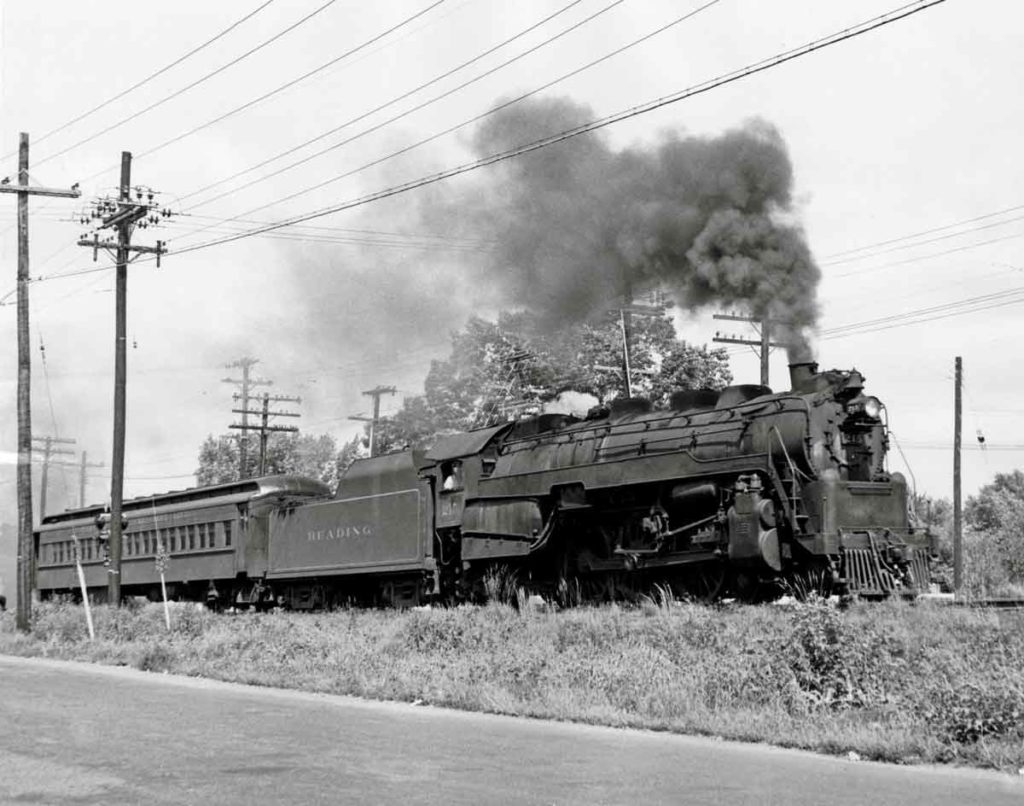
Characteristic of the indignities suffered by steam in its final years, Reading G-3 Pacific 215, built in 1948 as a top-flight passenger engine, loafs along with a single coach on the Pennsylvania-Reading Seashore Lines in September 1955. Philip R. Hastings photo […]
Read More…
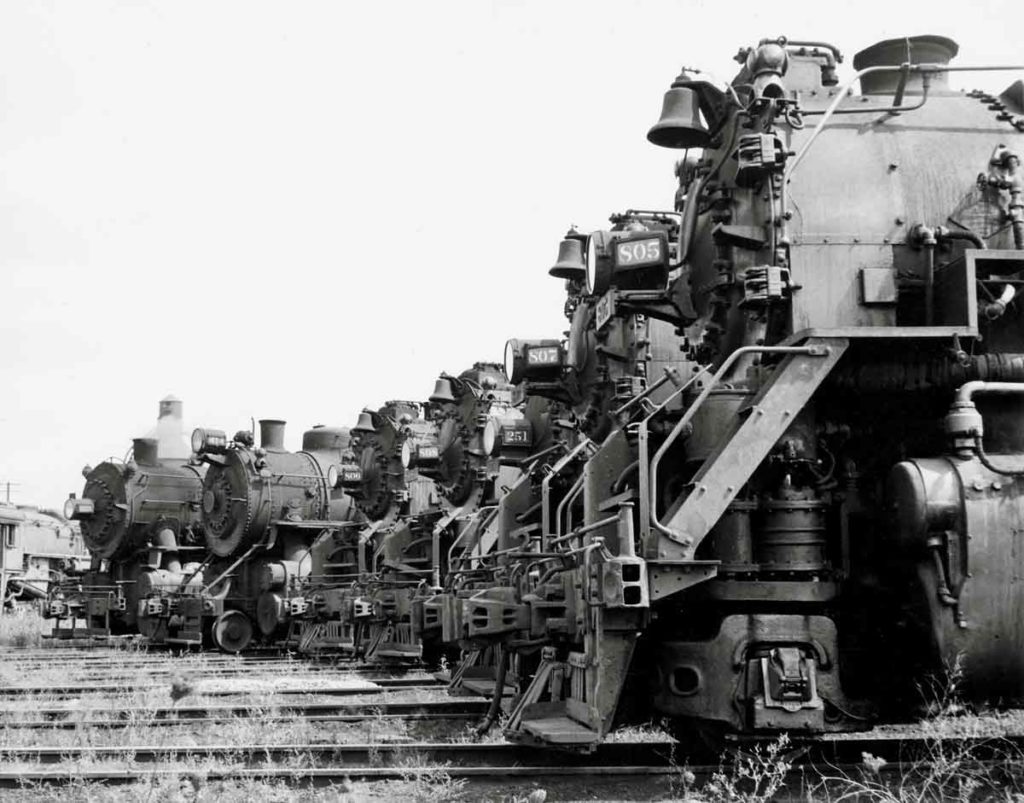
Mikados, an 0-8-0, and an ex-Pennsylvania Railroad Consolidation are arrayed around the turntable at Detroit, Toledo & Ironton’s Flat Rock Yard near Detroit on the day before Labor Day, 1955. Philip R. Hastings photo […]
Read More…
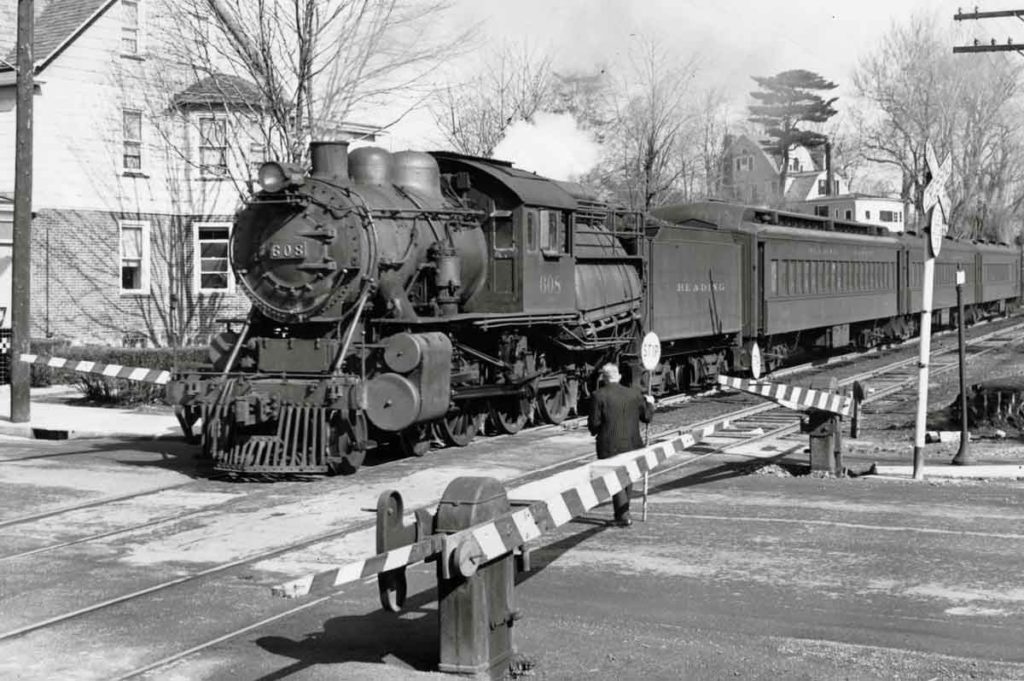
As a crossing watchman stands guard, Reading Camelback 4-6-0 No. 608 brings a Newtown, Pa.–Philadelphia local into Fox Chase station in 1948. Leslie R. Ross photo […]
Read More…
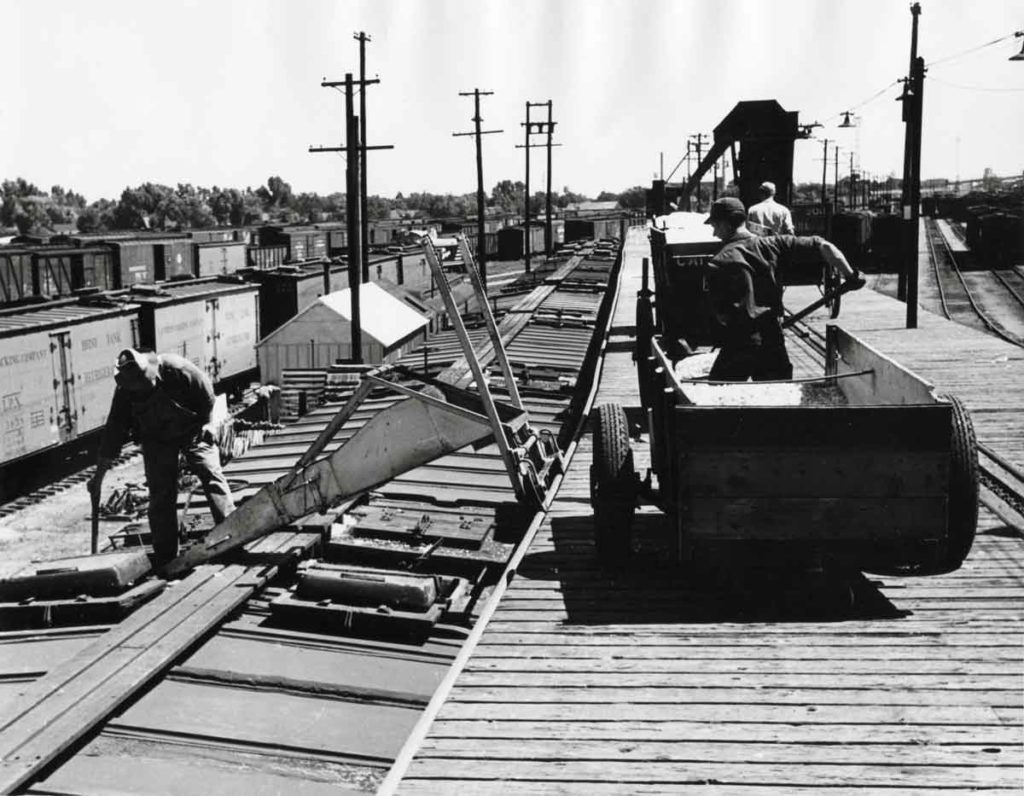
A worker shovels salt into a reefer via a rolling chute at the Chicago, Burlington & Quincy’s icing dock in Denver in 1949. The conveyor chain on the platform at right carries block ice along the platform. Earl Cochran photo […]
Read More…
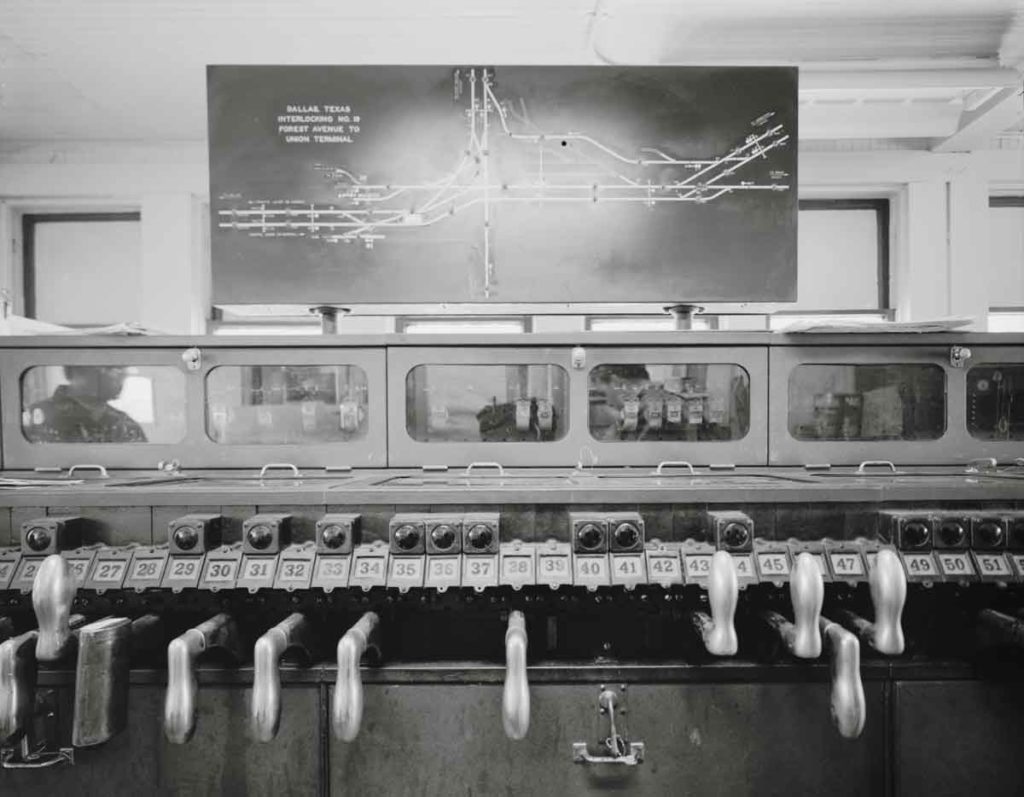
An interior view at Tower 19 near Dallas (Texas) Union Terminal shows the track diagram (“model board”) of the territory controlled by the tower and some of the levers that controlled the switches and signals. This is an electro-pneumatic interlocking, in which switches are operated by compressed air. Historic American Engineering Record photo […]
Read More…
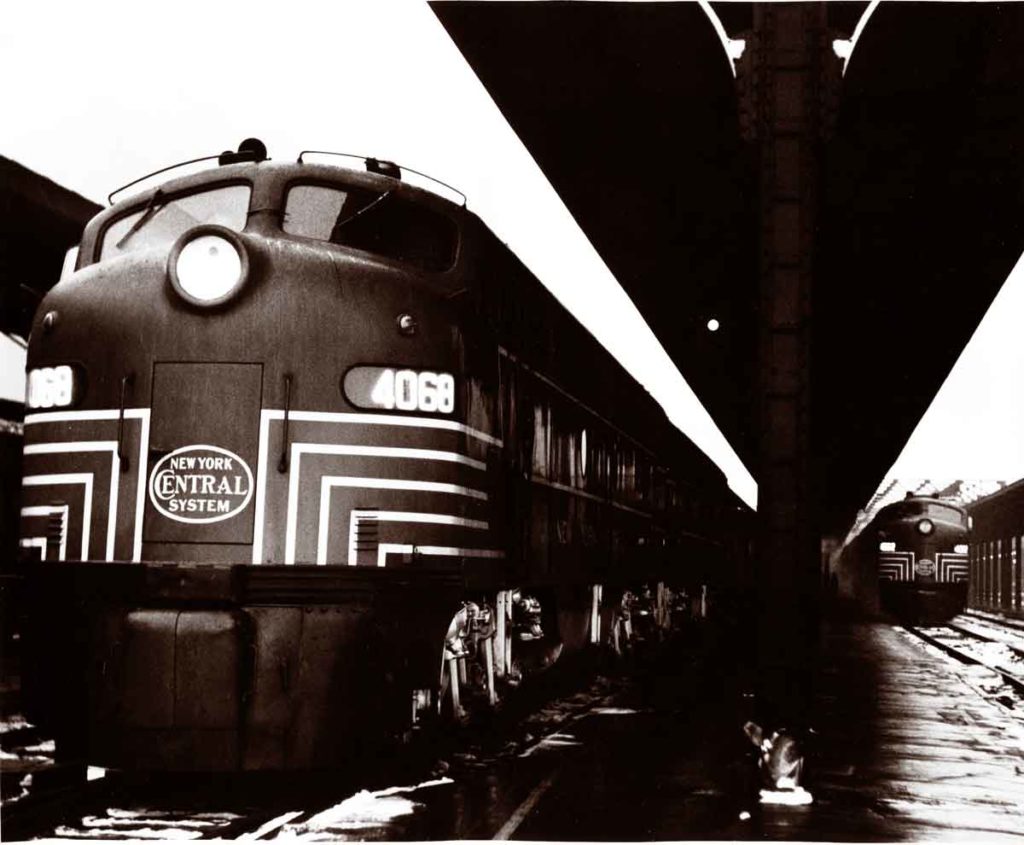
New York Central E8 diesels idle at La Salle Street Station, Chicago, awaiting departure with two sections of the 20th Century Limited in November 1953. Robert W. Carper photo […]
Read More…
Hundreds of historic railroad images. Subscribe today for unlimited access to all classic railroad photos. […]
Read More…
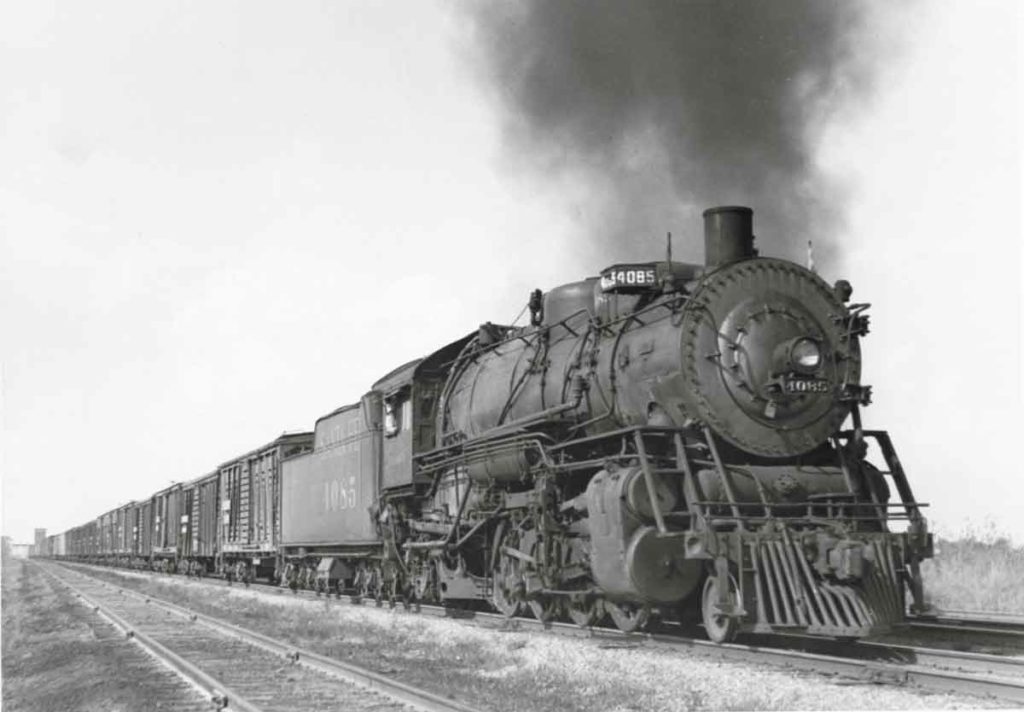
A long string of stock cars is tucked in behind Santa Fe 2-8-2 No. 4085 on train 44, the Perishable Express, near Henrietta, Mo., in 1946. Behind the stock cars are 33 refrigerator cars. Robert R. Malinoski photo […]
Read More…
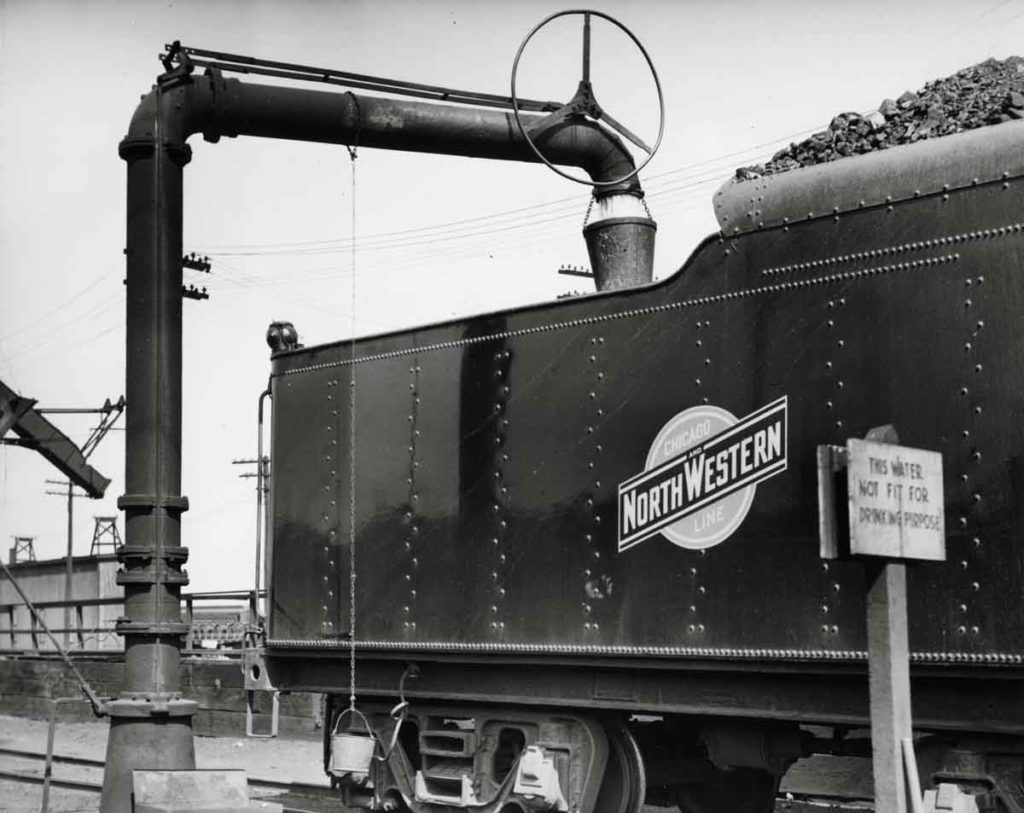
This is a typical standpipe (also called water crane, water column, or water plug) used to fill steam locomotive tenders with water, which is supplied by pipe from a tank. A single tank might supply several standpipes. When not in use, they were swung away from the track. The bucket-like object between the end of […]
Read More…
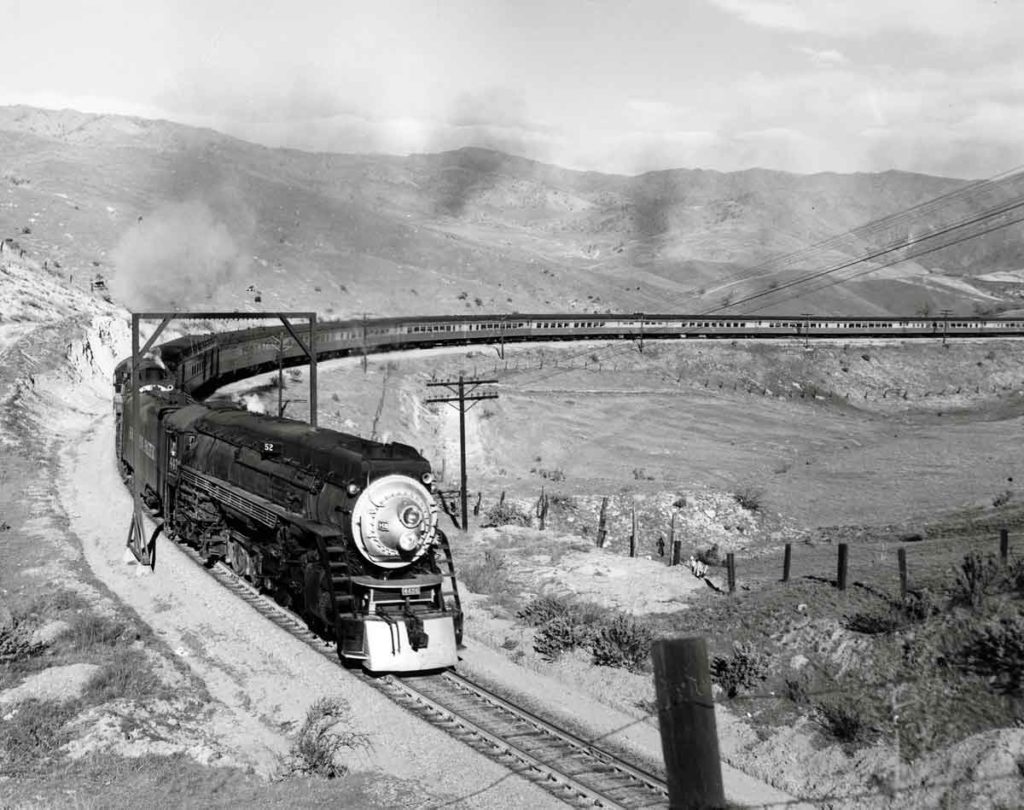
A Daylight 4-8-4 and a 4-8-2 doublehead the Los Angeles-bound San Joaquin Daylight upgrade at Allard, Calif., a dozen miles north of famous Tehachapi Loop, in May 1953. W. E. Malloy Jr. photo […]
Read More…











